If you needed another reason to cook your own food, this post illustrates the shocking difference between a day’s ‘convenience food’ and simple, freshly cooked meals.
I’ve detailed the contents of what’s in a fairly ordinary day’s food, first if you buy the dishes ready made, and second if you make them yourself. The results, I think, speak for themselves.
Here’s a menu for a day that sounds pretty good – It includes lots of fruit, veg, protein and fibre and there’s no cake, chips, sweets, burgers or pizza.What good possibly be wrong with that?
Well it is quite wholesome, unless you decide to let a food manufacturer make it for you…
Here’s my sample menu:
Breakfast Fruit and nut cereal and a banana and yoghurt drink.
Lunch Tuna and cucumber sandwich, fruit yoghurt and a soft drink.
Afternoon Snack Cereal bar.
Evening Meal Quiche and Salad.
So let’s have a look at the ingredients of this day’s menu if you decide to buy them ready made.
These ingredients, by the way, are of products from the highest ‘quality’ supermarkets and coffee chains, not the lowest! The packaging labels of the foods I’ve chosen include things like ‘healthy and natural’; ‘be good to yourself’; ‘fat free’……
This is the full list of ingredients you’d be eating:
Breakfast Rice, Wholewheat, Sugar, wheatflour, rice flour, vegetable oil, malted barley (a form of sugar), sugar, calcium carbonate, hazelnuts, sugar, rolled oats glucose syrup ( a form of sugar), vegetable oil, flavouring, tapioca starch, antioxidant (mixed tocopherois), barley, malted barley flour, almonds, barley malt flavouring, salt, vitamin c, niacin, iron, vitamin B2, vitamin B1, vitamin b6, folic acid, vitamin b12.
Lunch Oatmeal bread:, wheat flour, water, oatmeal, what bran, yeast, salt, wheat protein, spirit vinegar; emulsifiers (mono and di-acetyltartaric esters of mono and di-glycerides of fatty acids, mono and di-glycerides of fatty acids, vegetable fat, malted barley flour, flour treatment agent (ascorbic acid), canned tuna: tuna , salt, mayonnaise dressing: vegetable oil, water, spirit vinegar, sugar, pasteurised egg yolk, cornflour, salt, dijon mustard (water, mustard seed, spirit vinegar, salt), white pepper, mustard flour, concentrated lemon juice cucumber. Fat Free Yogurt (Skimmed Milk, Skimmed Milk Concentrate/Powder, Yogurt Cultures, Bifidus ActiRegularis® (Bifidobacterium Lactis DN-173 010)), Cherry (11.2%), Fibre (Oligofructose), Fructose (1.4%), Stabilisers (Modified Maize Starch, Guar Gum, Xanthan Gum), Concentrated Elderberry Juice, Acidity Regulators (Sodium Citrate, Lactic Acid), Flavouring, Sweeteners (Acesulfame K, Sucralose) Carbonated Water, Glucose Fructose Syrup (20%) (Lemon, Cranberry, Raspberry), Flavourings, Preservative (Potassium Sorbate), Caffeine, Extracts of Black Carrot, Stabilisers (Locust Bean Gum, Acacia, Glycerol Esters of Wood Rosins).
Afternoon snack Yoghurt flavour coating 30% (palm kernel oil, sugar, MILK whey, dried yoghurt (MILK), emulsifier: sunflower lecithin), dried apricots 17%, ALMONDS 12%, shredded coconut 12%, glucose syrup, crisped rice (rice, sugar), honey, For allergens, see capitalised ingredients, May also contain: Peanuts, Soya and Sesame Seeds.
Evening Meal Single cream (milk), pasteurised free range egg, feta cheese (milk) (11%), extra mature cheddar cheese (milk), wheatflour contains gluten (with wheatflour, calcium carbonate, iron, niacin, thiamin), slow roasted tomatoes (7%), unsalted butter (milk) (4.5%), onions, pasteurised free range egg yolk, spinach (2.5%), whole milk , cornflour , cracked black pepper , rapeseed oil , barley flour (contains gluten), salt, sugar, maltodextrin, tapioca starch, dried oregano, dried basil, ground black pepper, dried garlic, capsicum flavouring, chilli powder, ground cumin Romaine Lettuce (66%); Caesar Dressing (23%); Sea Salt & Black Pepper Croutons (7%); Parmigiano Reggiano Cheese (made from unpasteurised Cows’ Milk) (4%).Caesar Dressing contains: Water, Rapeseed Oil, Pasteurised Free Range Egg, Parmigiano Reggiano Cheese (made from unpasteurised Cows’ Milk), White Wine Vinegar, Cornflour, Sugar, Salt, Worcester Sauce (Malt Vinegar, Water, Black Treacle, Tamarind, Salt, Onion Powder, Garlic Powder, White Pepper, Pimento, Ginger, Mustard Flour, Paprika, Clove), Garlic Purée, Black Pepper.Sea Salt & Black Pepper Croutons contain: Wheat Flour, Rapeseed Oil, Yeast, Sugar, Sea Salt, Black Pepper.
Yes, that is the astonishing list of around 175 ‘ingredients’ that you would eat if you bought rather than made each of these dishes.
(Incidentally, that doesn’t include the banana and yoghurt drink in the morning – the manufacturer only provides minimal information such as calories / fat / sugar content and not full ingredients, so it’s anyone’s guess what’s in it…)
If you look more closely at the ingredients, you’ll see that sugar and sweeteners are mentioned no less than 22 times.
I also noted the ‘nutritional guidelines’ given on the packaging for each of these foods, and that information is also pretty astonishing, especially about the sugar intake.
The following data is per portion.
The ‘heatlhy’ breakfast cereal comes in at 12g sugar.
The banana and yoghurt frappucino comes in 55.2g sugar – yes 55.2g!
The sandwich contains 5g sugar.
The low fat yoghurt contains 11.7g sugar.
The soft drink weighs in at 34.1g sugar.
The ‘natural’ health food bar contains 8.8g sugar The quiche and salad contain 5g sugar.
So that’s a whopping 131.8g sugar you’ll have consumed in just one day
In fact, if you made a large chocolate cake from scratch and ate the lot, you’d have eaten less sugar….
So now let’s look at the nutritional content of the meals if you make them yourself:
This is the list of the ingredients you’d need:
Rolled oats, honey, vegetable oil, pumpkin seeds, sesame seeds, flaked almonds, dried berries, coconut flakes.
Ground coffee, milk, banana, yoghurt.
Flour, yeast, salt, sugar, water, tuna, cucumber, eggs, vegetable oil, salt, pepper, mustard seed, vinegar.
Yoghurt, cherries.
Oats, butter, raisins, cinnamon, ginger, salt, sugar, syrup.
Flour, butter, water, eggs, feta cheese, cheddar cheese, tomatoes, spinach, onions, salt, oregano, basil, pepper, cumin. Lettuce, parmesan cheese, white wine vinegar, salt, pepper, eggs, mustard powder, olive oil, anchovy fillets, garlic.
60 ingredients – all of them natural, many of them herbs and spices and certainly a list that you can probably recognise as food.
As far as sugar and syrup goes, sugar is used just twice in the home made menu- once in a tiny amount for the bread dough, and then in the cereal bar, and syrup is used once, in the cereal bar.
Overall, the sugar intake is about 15g.
My conclusion from this exercise is that it really reinforces the fact that marketing, advertising and food labelling all conspire to get us to eat horribly processed, unhealthy packs of ingredients that are a poor apology for food.
Taking raw ingredients and making a meal out of them is the fundamental recipe for a healthy diet – it doesn’t really matter what you make, but it’s always going to be infinitely better than buying your dinner in a packet.
The manufacturers have mastered the art of selling us a menu of chemicals by undermining our own cooking confidence.
They put misleading labelling and information on packaging that feeds that lack of confidence and then step back and say ‘hey, everyone has a choice, so we’re not to blame if people eat a lot of the wrong thing’…..
But of course they are not at all innocent. Billions of pounds are spent working out how to get people to buy processed food and it’s very difficult to resist the constancy and weight of that machine.
So we really must fight that seductive advertising, buy fresh veg and make our own food and do all we can to encourage others to do so too.

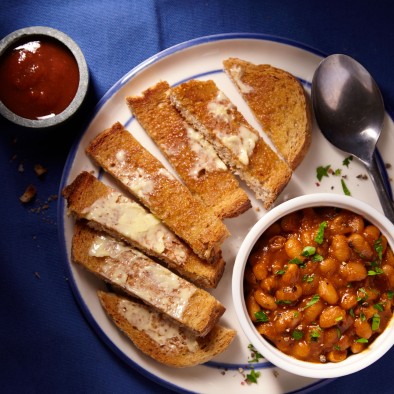
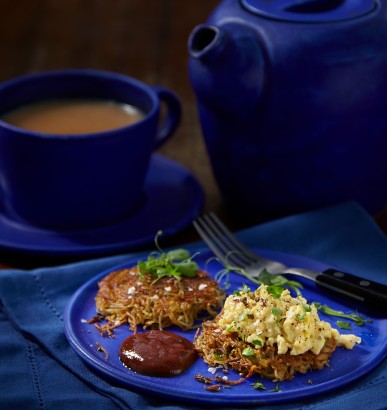



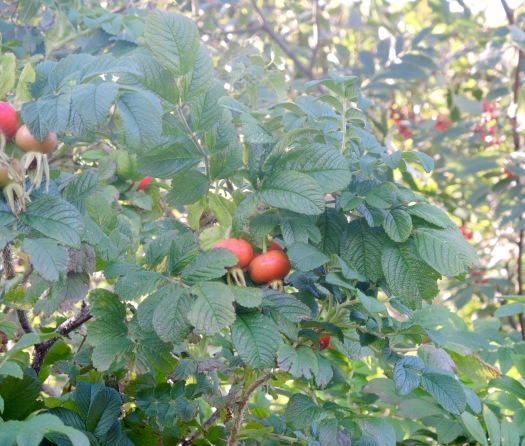


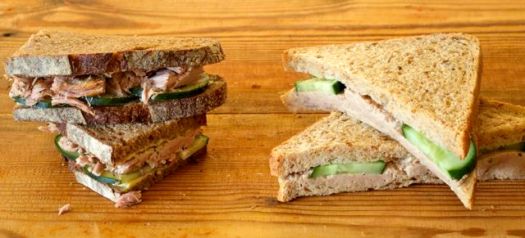





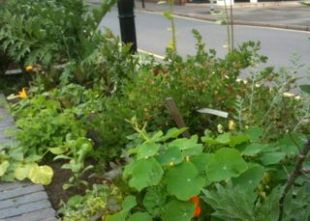

 Strawberries, onions, beans, gooseberries, oregano and garlic are all flourishing.
Strawberries, onions, beans, gooseberries, oregano and garlic are all flourishing.